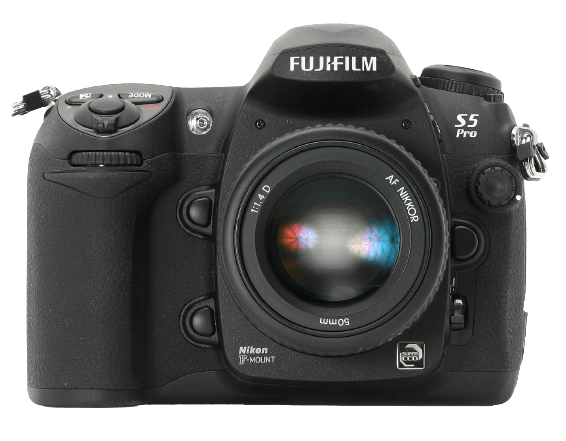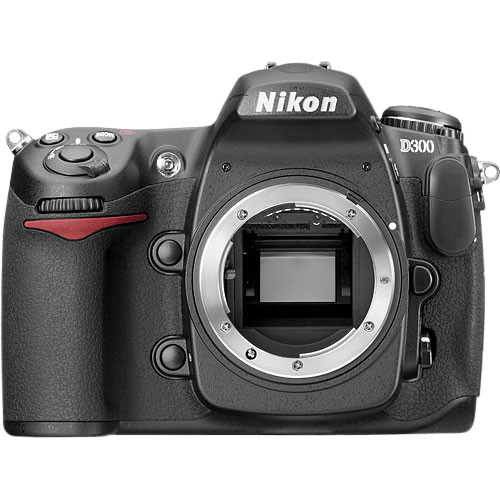Fujifilm FinePix S5 Pro vs Nikon D300 Comparison
Fujifilm FinePix S5 Pro

Nikon D300

The Nikon D300 outperforms the Fujifilm FinePix S5 Pro with a score of 49/100 compared to 36/100, a difference of 13 points. Both cameras are DSLR models, released in 2006 and 2007, respectively. They share similar dimensions, with the FinePix S5 Pro measuring 147 x 113 x 74mm and the D300 measuring 147 x 114 x 74mm. Their weights are also comparable, with the FinePix S5 Pro weighing 920g and the D300 weighing 925g.
The Nikon D300 justifies its higher score with a better overall performance and a higher launch price of $1540, compared to the FinePix S5 Pro’s launch price of $1200. On the other hand, one advantage of the Fujifilm FinePix S5 Pro is its lower launch price, making it more affordable for budget-conscious consumers.
Taking into account the scores, prices, and specifications, the Nikon D300 proves to be the superior camera, while the Fujifilm FinePix S5 Pro may appeal to those seeking a more budget-friendly option.
Fujifilm FinePix S5 Pro vs Nikon D300 Overview and Optics
The Nikon D300 emerges as the winner in our optics comparison with a score of 47/100, slightly ahead of the Fujifilm FinePix S5 Pro’s score of 43/100. Both cameras share a few similarities, such as having an APS-C sensor size, a Nikon F DX lens mount, and no image stabilization.
The Nikon D300’s advantages include a higher megapixel count of 12.3, compared to the S5 Pro’s 6.1 megapixels. This allows the Nikon D300 to capture more detailed images. Additionally, the D300 has a faster shooting speed of 6 frames per second, compared to the S5 Pro’s 5.5 frames per second, which enables the Nikon D300 to capture fast-moving subjects more effectively. The Nikon D300 also has a better processor, the Expeed, and a DXOMARK sensor score of 67, reflecting its superior image quality.
On the other hand, the Fujifilm FinePix S5 Pro features a unique Super CCD sensor, which, although not scored by DXOMARK, is known for producing images with excellent color rendition and a wide dynamic range. The S5 Pro also uses the Real Photo Processor Pro, which contributes to the camera’s ability to capture high-quality images, despite having fewer megapixels than the Nikon D300.
To conclude, the Nikon D300 has a slight edge over the Fujifilm FinePix S5 Pro in terms of optics, due to its higher megapixel count, faster shooting speed, and better sensor performance. However, the Fujifilm FinePix S5 Pro should not be overlooked, as its Super CCD sensor and Real Photo Processor Pro provide excellent image quality and color accuracy. Ultimately, the choice between these two cameras will depend on the specific needs and preferences of the photographer.
Fujifilm FinePix S5 Pro vs Nikon D300 Video Performance
In comparing the Fujifilm FinePix S5 Pro and the Nikon D300, it is important to note that neither camera has video functionality. Despite their other features and specifications, both cameras lack the ability to record video. This absence of video capabilities does not impact their overall score or quality as cameras, but it is a key distinction for those looking for video options in their camera choice.
Fujifilm FinePix S5 Pro vs Nikon D300 Features and Benefits
The Nikon D300 outperforms the Fujifilm FinePix S5 Pro in features, scoring 54/100 compared to the Fujifilm’s 17/100. Both cameras share some specifications, such as the lack of a touchscreen, flip screen, GPS, WIFI, and Bluetooth. Despite these similarities, the Nikon D300 has distinct advantages over the Fujifilm FinePix S5 Pro.
One of the main advantages of the Nikon D300 is its screen size and resolution. The Nikon D300 has a 3-inch screen, which is larger than the 2.5-inch screen on the Fujifilm FinePix S5 Pro. Additionally, the screen resolution on the Nikon D300 is significantly higher at 922,000 dots, compared to the Fujifilm’s 230,000 dots. This difference allows for a clearer and more enjoyable viewing experience when using the Nikon D300.
While the Fujifilm FinePix S5 Pro may have fewer features, it is important to note that the camera’s overall performance is not solely determined by its feature score. There may be other aspects of the camera, such as image quality, handling, and build, that could make it a suitable choice for some photographers. However, in terms of features, the Nikon D300 has a clear advantage.
Considering the feature scores and specifications of both cameras, the Nikon D300 is the better option for photographers seeking a camera with a larger screen and higher screen resolution. The Fujifilm FinePix S5 Pro may still be suitable for some users, but its lower feature score and smaller screen make it less appealing when compared to the Nikon D300.
Fujifilm FinePix S5 Pro vs Nikon D300 Storage and Battery
The Fujifilm FinePix S5 Pro outperforms the Nikon D300 in storage and battery with a score of 51/100 compared to 43/100. Both cameras have one memory card slot and accept Compact Flash (Type I or II) memory cards. Neither camera offers USB charging capabilities.
The S5 Pro has a significant advantage in battery life, offering 2438 shots per charge with its NP-150 battery. In contrast, the D300 falls short with only 1000 shots per charge using its EN-EL3e battery. This difference makes the S5 Pro more reliable for extended shooting sessions.
However, the Nikon D300 does not have any specific advantages over the S5 Pro in terms of storage and battery. Both cameras share the same memory card specifications, and the D300’s battery life is notably inferior.
Considering these points, the Fujifilm FinePix S5 Pro clearly surpasses the Nikon D300 in storage and battery performance, making it the better choice for photographers who require longer battery life and similar storage capabilities.
Fujifilm FinePix S5 Pro vs Nikon D300 – Our Verdict
Are you still undecided about which camera is right for you? Have a look at these popular comparisons that feature the Fujifilm FinePix S5 Pro or the Nikon D300:

